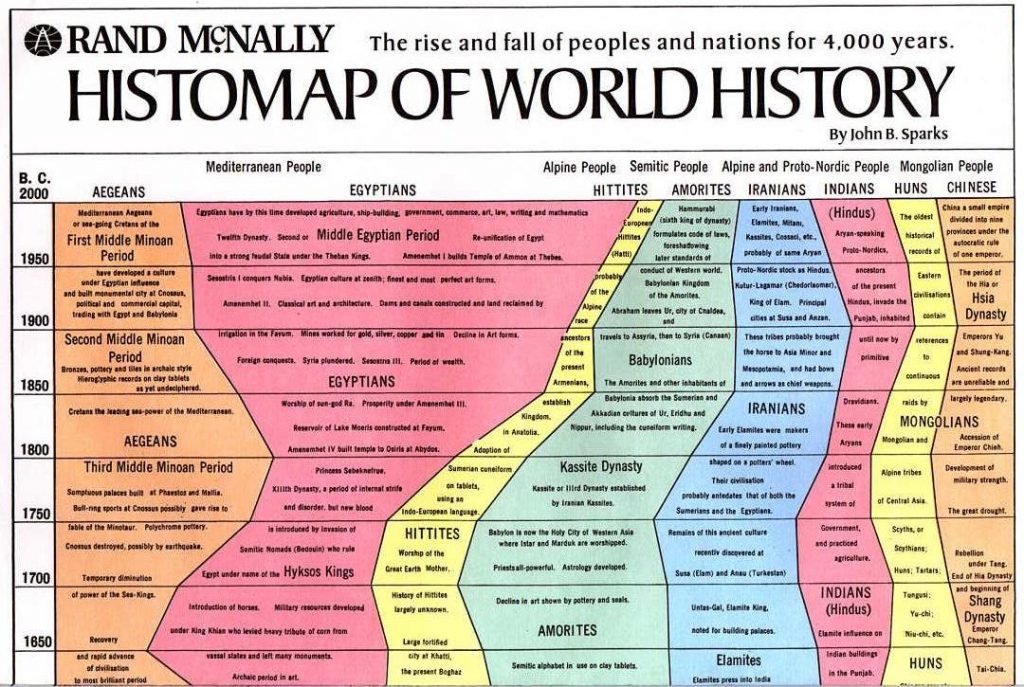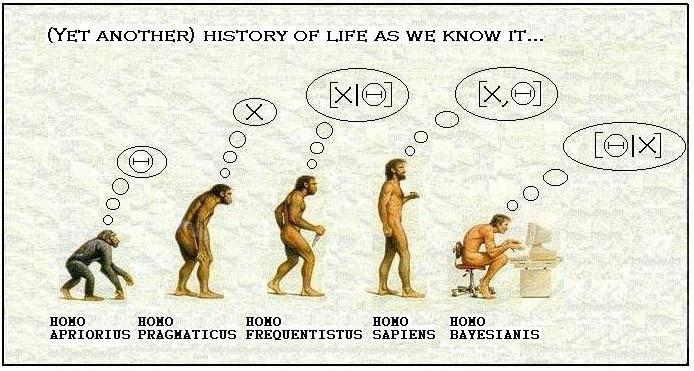- Given P(X = E(X)) = 1, does that mean Var(X) = 0?
- An interesting analysis of US high school graduation rates, conducted using R and googleVis.
- Do you have a unisex name? The following series of visuals tells us the most common unisex names in US history, and how the ratio of boys to girls changes over time.
- Most of us know what instrumental variables are (if not, here’s the Wikipedia page), but do you know what weak instruments are? The diffuseprior blog has a tutorial and tells you how to find them using R.
September, 2013
30
Sep 13
The week in stats (Sept. 30th edition)
23
Sep 13
The week in stats (Sept. 23th edition)
- The Histomap of World History illustrates the rise and fall of various empires and civilizations through an increasing time series up to present day (because the original image is too large, we include a truncated version here in post). Did you know that you can create these visuals in R? Here is how to do them.
- When we deal with time series modelling and forecasting, many people start with sophisticated models like the ARIMA or the GARCH. Rob Hyndman of Monash University suggests that when forecasting daily data, unless the the time series is very long, the easiest approach is to simply set the frequency attribute to 7. Then any of the usual time series forecasting methods should produce reasonable forecasts.
- Kaiser Fung, the owner of the popular statistics blog Junkcharts, interviews Andrew Gelman.
- OpenStreetMap is crowdsourced map project. Thousands of users log in each day, and help to improve the map by updating their neighborhood. Here is a visualization of this amazing social fabric of individuals working together. Every user is assigned different color, and their updates are represented on this map. Take a look at how many people have been mapping near you.
- A series of four articles by Charlie Kufs of statswithcats on How to Write Data Analysis Reports.
- What is the limiting distribution of a sum of weighted Gaussian?
16
Sep 13
The week in stats (Sept. 16th edition)
- This week, we found a number of useful webinars and presentations for statisticians and data scientists on R. Feel free to check out the following opportunities: Online course on forecasting using R by Prof. Hyndman of Monash University, Coursera’s free R courses, Why use R for Data Analysis by Vivek H. Patil of Gonzaga University, and two workshops on R by Bob Muenchen.
- If I roll five dice, what’s the chance that exactly two of the die show the same number?
- Did you know that even famous mathematicians like Paul Erdős had a hard time believing the result of the Monty Hall Problem? It was a computer simulation that eventually convinced him. Here’s a simulation of the Monty Hall Problem, and my own take on the how the problem is often poorly presented.
- During the 2013 JSM (Joint Statistics Meetings) Conference in Montreal, Revolution Analytics conducted a survey of attendees from August 5 to August 8. The 865 respondents gave their opinions on the privacy and ethics related to data collection, and on their familiarity with statistical software used for the analysis of such data. Out of the 865 statisticians surveyed…

9
Sep 13
The week in stats (Sept. 9th edition)
- Larry Wasserman, Professor at Carnegie Mellon University, is a graduate of University of Toronto, a COPSS Award winner, and a leading statistician in Bayesian analysis and inference. In this post, he discusses his views on the question Is Bayesian Inference a Religion?
- Two people will each spend 15 consecutive minutes in a bar between 12:00pm – 1:00pm. Assuming uniform and independent arrival times, what is the probability that they will have a chance to clink glasses?
- Have you ever wondered which statistical package gives the fastest computational speeds? This quick comparison of Julia, Python, R and pqR provides some guidence.
- An interesting analysis of the most popular porn searches in the US.
- A quiz for everyone in the data visualization industry: Identify at least three problems with this chart and explain what you can do to make it better.
- R user groups continue to thrive worldwide. Joseph Rickert from Revolution Analytics prepares the following compilation of the locations of 127 R user groups around the world.
2
Sep 13
The week in stats (Sept. 2nd edition)
- Do you have a Master’s degrees in Statistics? Is it worth your time to get one? Jerzy Wieczorek, mathematical statistician at the U.S. Census Bureau. discusses his thoughts on postgraduate educations for statistician.
- The Karpov vs. Kasparov rivalry holds a special place in the chess world. The duo, (arguably) the two best players ever in the history of this game, played 201 matches over almost 35 years. The following analysis (with R visualizations) show which one of the two Russians deserves to be the best of all chess players.
- One piece of advice for all of you who are in the data visualization industry: hate the default.
- In July of each year, Forbes, in partnership with the Center for College Affordability and Productivity (CCAP), produces a ranking of 650 universities in the US. Vivek H. Patil, Associate Professor of Marketing at Gonzaga University, provides some neat visuals on the Forbes University Ranking. I reviewed a book that had a wonderful chapter about all the ways that law schools cheat to improve their public rankings.
- A stick randomly breaks into 3 pieces, what is the probability that the 3 pieces can form a triangle?
- How do people die? A display of ranked causes of death, and how they’ve changed since 1990.
- If you work with time series data frequently, you should learn how to convert daily observations into weekly/monthly data in R.



